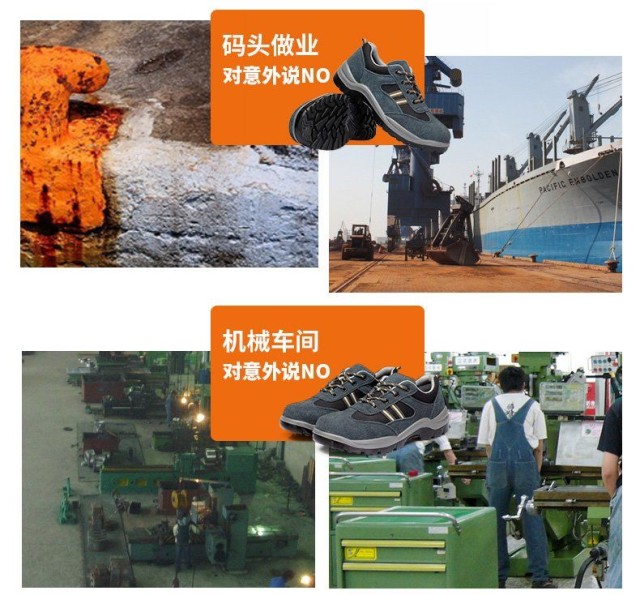Selecting the right safety toe boots isn't just about compliance—it's about preventing injuries while maintaining comfort. Whether you're a distributor sourcing for clients or a brand owner curating protective gear, understanding how material properties and industry-specific risks intersect ensures optimal protection.
Safety Toe Boot Essentials for Hazardous Work Environments
Conclusion First: The best safety boots balance protection, comfort, and hazard-specific features.
Key Considerations:
- Hazard Type: Identify primary risks (impact, electrical, slip, or temperature extremes).
- Material Trade-offs: Steel toes offer maximum durability but conduct electricity; composites are lighter and non-conductive.
- Activity Level: Highly mobile workers need lightweight designs; static roles prioritize insulation.
Example: A construction worker facing falling debris needs ASTM F2413-compliant steel toes, while an electrician requires EH-rated composite toes.
How Material Choices Impact Protection
Steel vs. Composite vs. Alloy:
-
Steel Toe
- Pros: Highest impact resistance, cost-effective.
- Cons: Heavy, conducts electricity/cold.
- Best for: Manufacturing, heavy construction.
-
Composite Toe
- Pros: 30% lighter than steel, non-conductive, weather-insulating.
- Cons: Bulkier than alloy.
- Best for: Electrical work, cold environments, security-sensitive sites.
-
Alloy Toe
- Pros: Lightweight like composite but slimmer.
- Cons: Less insulation.
- Best for: Precision tasks needing agility.
Research shows composite toes reduce leg fatigue by 15–20% over steel in 10-hour shifts.
Matching Boot Features to Industry Risks
High-Risk Industries and Their Boot Requirements:
- Construction: Steel/metatarsal guards (ASTM F2413), slip-resistant soles.
- Electrical Work: EH-rated composite toes (non-conductive).
- Oil/Gas: Chemical-resistant uppers, spark-free soles.
- Cold Storage: Insulated (400g–1200g), waterproof linings.
Real-World Insight: Workers in welding environments often overlook heat-resistant soles—a critical feature for preventing burns from molten metal.
Compliance and Certification Standards
ASTM F2412 vs. F2413:
- F2412: Tests impact/compression resistance only.
- F2413: Adds metatarsal, electrical hazard (EH), and puncture protection.
Always verify: Labels like "EH" or "SR" (slip-resistant) must align with job hazards.
Real-World Scenarios and Injury Prevention
Case Study: A warehouse worker slipped on grease, fracturing an ankle. The root cause? Boots lacked oil-resistant soles despite working near machinery.
Prevention Checklist:
- Audit workplace hazards annually.
- Train workers on boot maintenance (e.g., replacing worn treads).
- Partner with manufacturers like 3515 for bulk orders tailored to industry needs.
Ready to Equip Your Workforce?
3515 delivers safety footwear solutions for distributors and brands—engineered for hazard-specific protection without compromising comfort. Contact us to customize bulk orders that align with your clients' unique risks.
Key Takeaways:
- Match toe material to electrical/impact risks.
- Prioritize ASTM F2413 for comprehensive protection.
- Insulation and slip resistance are as critical as toe caps.
Products You Might Be Looking For:
Explore customizable safety footwear for workplace hazards
Related Products
- Wholesale Customizable Suede Safety Boots - Puncture-Proof with Velcro Closure
- Customizable Anti-Smash Safety Boots for Wholesale & Private Label Manufacturing
- Durable Leather Safety Boots for Wholesale & Custom OEM Manufacturing
- Wholesale Durable Safety Boots Manufacturer Customizable Steel Toe Work Boots
- Wholesale Durable Safety Boots | Custom Steel Toe & Puncture-Resistant Manufacturing
Related Articles
- Work Boots vs. Western Boots: How to Choose the Right Footwear for Labor Safety
- How to Choose Work Boots That Match Your Job's Safety Demands
- How to Choose Work Boots That Match Your Industry's Safety Needs
- Steel Toe Work Boots: Balancing Safety and Comfort for Demanding Jobs
- How Safety Work Boots Engineer Protection: Features and Standards for Targeted Hazard Mitigation



















